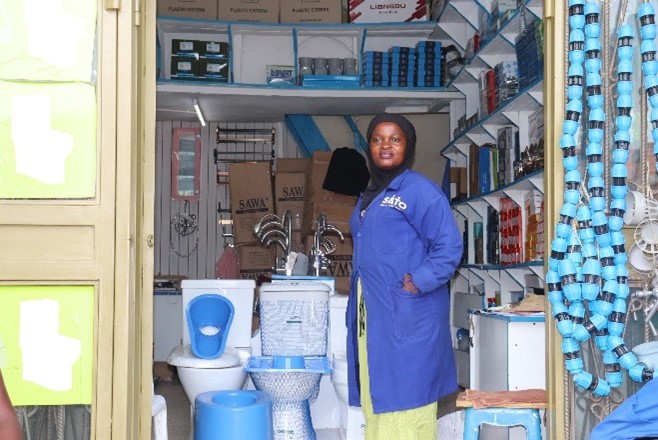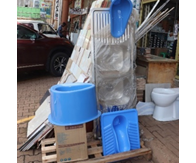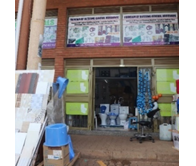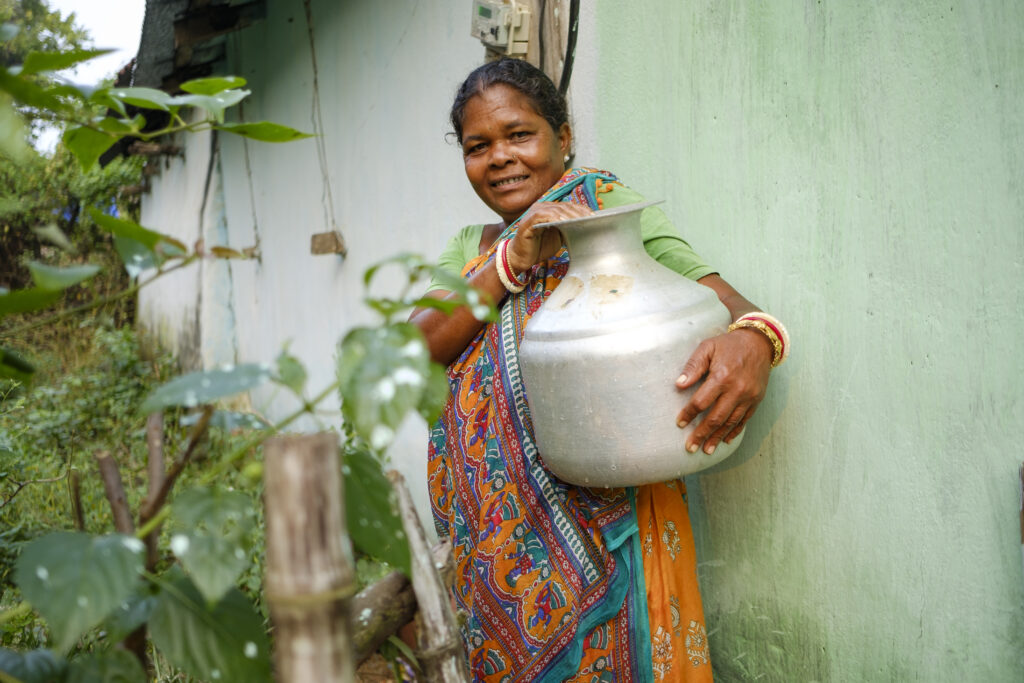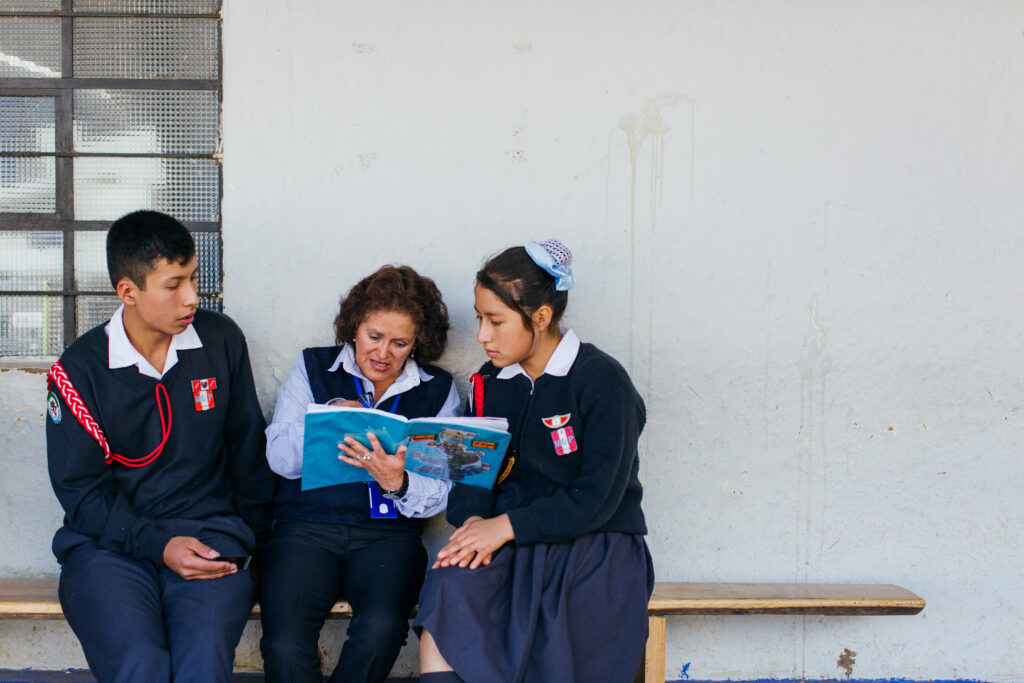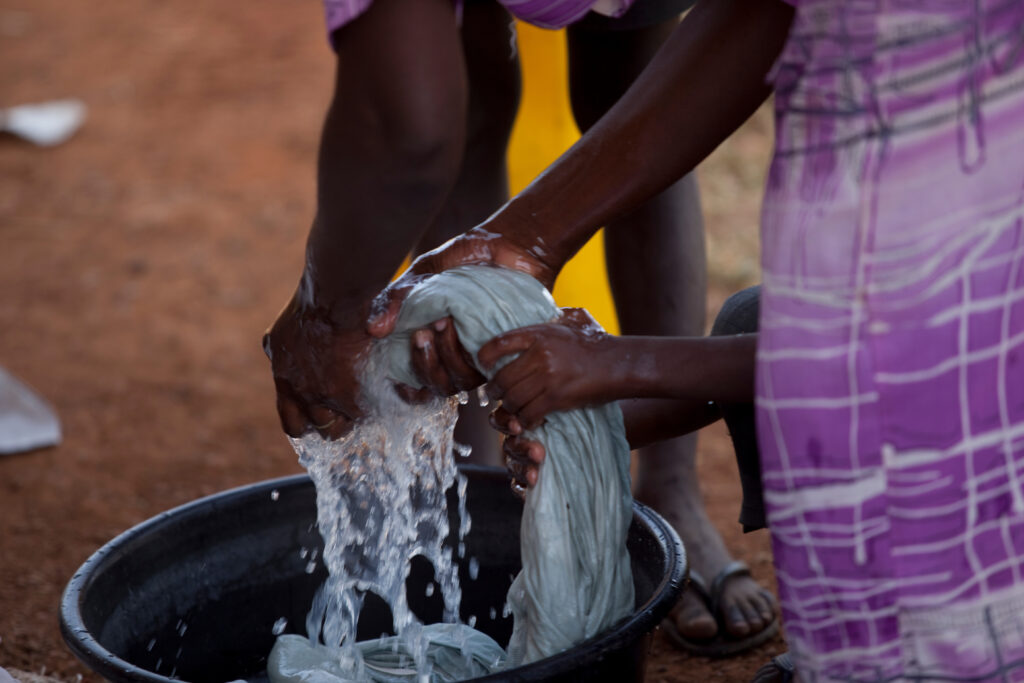By Cate Nimanya, Former Country Director, Water For People in Uganda
Versión en español aquí.
Kemirembe Janet owns the Kemirembe Fountain of Blessing General Hardware dealer that has been selling SATO Pans in Nakasero Market in Kampala, Uganda since 2014. She sells mainly to low-income households in Kampala or to the masons and contractors that transport the toilets to rural areas. She was introduced to the product by Water For People seven years ago. When I ask her how many she has sold last month, her facial expression changes. Due to the COVID-19 pandemic she has managed to sell only 50 pieces. This is not so bad, since in a good month she sells more than 70. Janet is among the over 500 distributers of the SATO Pan in Uganda who were recruited back in 2015 when Water For People partnered with LIXIL (then American Standard) to introduce the product to the Ugandan market.
The SATO Pan is a simple plastic mold that fits over a latrine pit, which means it can be used even when basic plumbing or sewer infrastructure are absent. It addresses persistent challenges faced by ordinary latrine owners, enabling users to enjoy an odorless atmosphere with no flies. The SATO Pan is easy to clean with minimal water use and discourages use of the latrine as a garbage disposal point, increasing its durability and making it easier to empty. Most importantly, the SATO Pan is safe to use by children, preventing accidents.
Currently, Nice House of Plastics, the licensed manufacturer in Uganda, produces three models of the SATO Pan in close collaboration with LIXIL: a low flow pan with locking tabs, a flex-install pan with quiet close, and a low flow stool with quiet close.
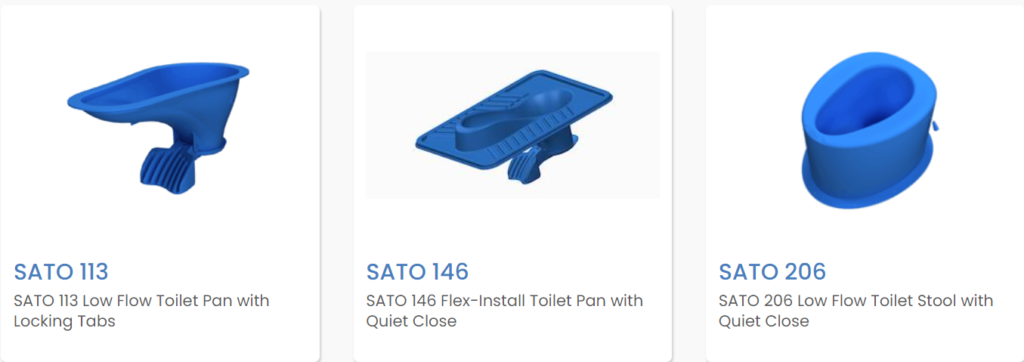
SATO Pans were introduced in Uganda in 2014 with a donation of 200 products for market testing with both rural and urban households. Roughly 50,000 pans have been sold every year for the past three years in Uganda.
Market-based sanitation is defined as a development approach to improve sanitation in a country by building the sanitation market for goods and services for which the customer makes a full or partial monetary contribution toward the purchase, construction, upgrade, and/or maintenance of their toilet from the private sector (UNICEF, 2020). Water For People has been promoting this approach in Uganda to grow the SATO Pan market. The approach is effective in urban low-income communities, and in rural areas, it is combined with other approaches like Community Led Total Sanitation to accelerate and sustain the sanitation goals in a district. The SATO Pan market has grown overtime in Uganda, and we have learned several lessons, including:
1. Knowledge of the sanitation situation and market segmentation helps target the right customers. We have learned overtime that understanding the market for any sanitation product or service is critical for the success of the business. Fifteen million Ugandans have access to a basic sanitation facility.1 These facilities can easily be upgraded with the SATO Pan, enabling users to take a step up the sanitation ladder. Understanding the size of your potential market is crucial, and having access to accurate data on current service levels is invaluable. In Uganda, we have used data from the Ministry of Health, Division of Inspection, Sanitation and Hygiene.
2. Understanding the customer interests and aspirations helps to provide the right product. Not everyone that has a basic toilet will be a customer. Therefore, undertaking an in-depth market research study will help understand customers’ interests, preferences, aspirations, and the features for which they are willing to pay. Market research undertaken by the Sanitation for Health Activity in Uganda showed that out of the 15 million Ugandans, only 4.9 million households can afford to upgrade their latrines. This is the potential market for SATO products. Of these households, 1.9 million can construct a new toilet and with a SATO Pan, and the remaining 3 million can upgrade their existing toilet with a SATO Pan immediately. Our marketing programs are targeting this population. These households are found in low-income rural communities and low-income urban slum-dwelling communities.
3. Continuous product design and improvement is critical. The success of the SATO Pan in Uganda is due to the responsiveness from LIXIL to serve different customer segments. We currently have three designs on the market which has improved the value proposition for a broader group of customers. LIXIL worked closely with Water For People in the early years to undertake customer feedback. They were open to modifications, such as adding a counterweight to the opening mechanism of the pan to reduce noise as one was using the pan. Masons would often make errors during the cement measurement, hence affecting its operation. The design process has been iterative, leading to products that appeal to various customer segments.
4. A strong delivery model ensures robust distribution. To meet consumer demand, Nice House of Plastics has a distribution chain that includes 46 super storers spread throughout the country. These storers distribute to various retailers, including hardware shops, community-based organizations, and individuals. Water For People supported over 500 hardware and retail shops (like Janet Kemirembe’s!) in different parts of Uganda to carry the SATO products.

5. Strategic partnerships can lead to scale. Collective action will enable Uganda to achieve safely managed sanitation. There are many sanitation players in Uganda with an interest in SATO Pans, and this has led to growth along the entire value chain. Most efforts have supported demand creation at community level, training of masons, and support to the storage and hardware shops. Marketing campaigns using various channels in Uganda has stimulated the market further. To date, monthly sales of 4,000 to 5,000 products across the country is the result of collective action. Water For People has partnered with Rotary Clubs, the Uganda Sanitation for Health Activity, Kampala Capital City Authority, and UWASNET members, all of whom have ongoing sanitation improvement programs in various parts of the country. Partners aim to enable every household to access the SATO Pans, while making a conscious effort not to distort the market.
6. Managing messages, branding, and communication is key. The communication strategy for SATO Pans is spearheaded by LIXIL in order not to confuse value chain actors or communities in Uganda. Sales and marketing campaigns are carried out to persuade interested customers into a purchasing decision. The SATO brand fliers and wall branding can easily be translated to different languages and used by all partners.
The SATO Pan story continues in Uganda with less and less support or intervention from Water For People. The market is enabling access for many, but there are still challenges related to affordability, so there is still an ongoing role in unlocking the last mile!
[1] Ministry of Water and Environment (MWE), 2020. Sector Performance Report 2020. https://www.mwe.go.ug/library/sector-performance-report-2020.

